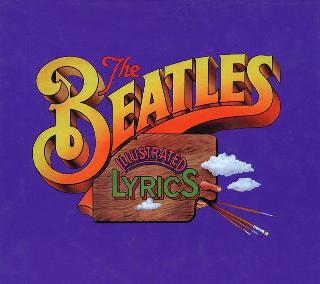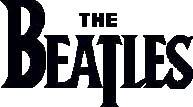Index
Home
Vorige
Paperback Writer
Composer(s) : Lennon and McCartney
Year : 1967
Chords/Tabs: Paperback Writer
Notes on "Paperback Writer"
INTRODUCTION
- This double-A single marks one of *the* most significant nodal points
in the compositional and recording development of the Beatles. After
the just-in-time for Xmas release of _Rubber Soul_ the Beatles took a
four month break from the studio. They went straight to work on what
was to become the _Revolver_ album in early April '66, and the two songs
on this single, released in June (two months ahead of the album) were
recorded just a couple weeks into the new sessions.
- The subject matter, musical style, and recording technique of both
"Paperpack Writer" (PW) and "Rain" (R) make them as qualitatively
different from what we heard on the album which preceded them as
they pressage the album which was yet to follow. The release of
"Penny Lane" b/w
"Strawberry Fields Forever" as an antecedent to the
_Sgt. Pepper's Lonely Hearts Club Band_ LP is the other major single
of theirs to have this level of potent prescience in terms of an album
in progress.
- The other important angle to a study of this pair of songs is the
extreme to which they bear comparison and contrast with each other.
Each of these songs reflects so clearly its respective composer, and
yet at the same time, there are similarities galore which reflect
not only cross-influence, but I suspect, a subtle element of
competetive looking over each other's shoulders. We've explored
this notion several times before in this series, most notably in
connection with
"All My Loving/
It Won't Be Long" and
"She Said She Said/
Good Day Sunshine."
- So what are the similarities in this case ?
-Key -- both songs "sound" in the key of G, even though the backing
track for R was recorded at a faster tempo and higher key, and
slowed down during the mixing phase to playback differently.
-Post-processed special effects -- As Lewisohn puts it (Recording
Sessions, p. 74), "both were chock full of all the _Revolver_
technical advancements: limiters, compressors, jangle boxes, Leslie
speakers, ADT." More specifically, PW has the tape echo at the
end of the alternate verse sections, and R, in addition to the
modified tape speed, includes the much talked about played-backwards
vocal in its outro.
- Wall-of-sound texture -- Even without the special effects, both
songs have a noticeably denser, punchier texture than virtually
anything else done by the group up until this point, largely
the result of the standout drumming, basswork, and heavily
over-dubbed vocal harmony on both cuts.
-Drone-like harmony -- Neither song is literally built on
a pedal point, though both of them use very few chords, and
contain sustained passages over the I chord that lend a static
feeling to the harmony overall. At other times, the Beatles
could delightfully take you by surprise with a novel chord
progression, but in this case they seem to be transfixed by
an aesthetic of stasis.
- Subject matter -- Neither is a love song. "Nowhere Man" was
the only other time, to date, where they had tried anything
like this, but from this point forward, this tendency to comment
on things social or experiential would become increasingly
pronounced.
- And then again, there are those yin-yang/John-versus-Paul points of
contrast between the two songs, and what's particularly delicious
about some of these is that they are embedded within factors that would
otherwise seem at a superficial level to be common denominators rather
than points of departure:
- Tempo -- This pair of songs constitute what might be among the
fastest and slowest ever songs done by the Beatles to-date. In
the case of PW, listen to how fast the "1-2-3-etc." count-in is
on the pair of bootlegs that are in the public domain (I use the
latter term loosely :-)), and the fact that take 1 of the backing
track breaks down because, as George notes on the tape, it keeps
getting faster.
In the case of R, John's ultra-slow harmonic rhythm and his scanning
of the words (see the bullet on 'Prosody') manage to project an almost
catatonically measured pace in spite of all furious activity in the
textural foreground.
-Perspective on the respective subject matter -
- Paul's essay is
a gritty, journalistic slice of life on the sleazy side, starting
off in the first person and cleverly shifting 'round to a self-
referential third-person focus as the book is described. Indeed,
you *must* see the photograph of Paul's manuscript for the lyrics,
not only written out literally in the form of a letter (opening ==
Dear Sir [or Madam]), but *signed* by one "Ian Iachimoe." Talk
about vague references or hard trivia questions; who's 'e, eh ?? :-)
John, true to his own form, turns in an elliptical tirade in the
third person about what "they" do when the metaphorical 'rain' comes;
inscrutable on the surface but pregnant with deeply embedded meaning.
- Modality of the home key -- PW is *quite* Mixolydian. For example,
the tune places great emphasis on the melodic flat 7th, and the
harmony includes I, ii, and IV but *not* V; if you check the
bootleg take 1 you can actually hear them playing V in the
intro and refrain sections but in the final mix it's deftly
mixed out!
"Rain", on the other hand, though it is harmonically much more
clearly in the Major mode (check out the I-IV-V chord vocabulary),
manages to convey a modal feel by virtue of its pseudo-pentatonic
melody (note how the lead vocal contains no 2nd or 7th scale
degree -
- i.e. no 'A's or 'F's), and the open-fifth drone-like
harmonies of its refrain sections.
- Prosody of the verbal delivery -- "Prosody" is a technical term
describing the manner in which words are rhythmically declaimed
together with accompanying music. In contrast, say, to the almost
deadly four-square delivery heard in a song like
"Yellow Submarine",
PW provides as good an example as you'll ever find of syllables
pleasurably ricocheting off an underlying beat.
"Rain", in contrast, is performed in style in which the words
seem to be intoxicatedly, and/or counter-intuitively fighting
against the beat. The 'Master' (if not outright 'inventor') of
this technique circa 1966 was Bob Dylan. To the extent that it
would become a very Lennonesque trademark as well from this point
on is, to me, evidence of a to-date uncharted, overlooked subtle
point of Dylan's influence on the Beatles.
- And on that note, let us move on, finally, to our closer look at each
of these songs in turn.
Paperback Writer
KEY G Major
METER 4/4
FORM Intro -> Verse -> Verse' -> Refrain (intro) ->
Verse -> Verse' -> Refrain (intro) -> Outro (fadeout)
GENERAL POINTS OF INTEREST
Style and Form
- This song is definitely in the top tier of Beatles' hardest rocking
cuts. In addition to the fast tempo and gutsy backing track, the melodic
flat 7th of the Mixolydian mode and the 12-measure verse lengths add a
touch of the Blues.
- The form is made curious by virtue of the acapella opening (see
"Nowhere Man"
), the doubling up of the verses, and the recurrence of that unusual
intro as a sort of refrain section.
- I've commented elsewhere about how, whenever you have a song that
starts off with a vocal pickup, the unedited studio tape *must* have
on it some amount of pre-take cueing of the starting pitch for the
singers. Take 2 of this song provides a perfect proof of this, where
you can here them, just before the actual count-in singing the word
'Paperback ...' in a nervously tentative stage whisper.
Melody and Harmony
- The tune has the bouncing rhythm and limited melodic countour of a
patter song, or even "talkin' blues", though just the same, it does
manage to fill out the full octave in a rather clever way.
- Harmony is used quite frugally to static effect. To the extent that
the V chord is supressed from appearing throughout, the sense of
homekey is left to establish itself via the relatively weak plagal
cadence of the IV chord, and a kind of drone-like, manifest insistence
of the I chord.
Arrangement
- The vocal parts are worked out and varied to an unusual extent.
George and John's backing vocals play off of Paul's double-tracked
lead vocal, sometimes antiphonally (the intro), sometimes in
accompaniment (Frere Jacques), and yet at other times in chorus
(the hook line at the end of each verse).
- Alas, the vocal parts don't sound quite as *well rehearsed* as they
are ambitious. After repeated close listenings to the recording you
can't help notice the often ragged ensemble cutoffs at phrase endings
or entrances.
- The fancy vocal parts are just about upstaged by the much discussed
Motown-like punchy bass part and the syncopated lead guitar riff. For
that matter, you can't overlook Ringo's between-the-sections drum fills
here. Though they were an trademark of the Early Beatles sound, they
kind of disappear for the most part during _Rubber Soul_, yet make a
welcome return on both sides of this single, and on many other _Revolver_
cuts as well.
SECTION-BY-SECTION WALKTHROUGH
Intro
- The intro is eight measures long:
|Acapella vocals----------------||Guitar riff-------------------|
|C |G |a |- ||G |- |- |- |
G: I V ii I
- The first half is set for pseudo-acapella voices in a pattern of cascading
antiphony that is something off the beaten path for these guys. The large
number of overdubs makes it sound as though many more than just three
people were singing; a modest anticipation of what would surface much
later in the likes of
"Because."
- In the second half we suddenly are faced with almost the entire instrumental
backing ensemble executing a double-barreled iteration of a really knockout
ostinato riff for lead guitar and bass drum; one that I'd say is easily way
up in there the same class with the one from
"Day Tripper" in terms of both
its distintive melodic contour and craggy syncopations that extend over one
and a half of the ostinato's two-measure length.
- The outtakes reveal two subtle points about this intro:
- - The finished recording is mixed to sound as though the intro were
performed "ad libitum", but the outtakes prove that it is very much
done in tempo. Take 2 contains both a count-in *and* a metronomic
tapping out of the beat on what sounds like a cymbal, not only through
the entire first half of the intro but in every other 'refrain' where
the acapella vocal section is repeated. Darn clever how this tapping
track is so neatly mixed out of the final version.
- - The harmony of the acapella section sounds on the finished recording
as I've diagrammed it above: just I, IV, and ii. In take 1, though,
you can clearly hear a skeletal backing track (placed there, I assume,
to provide sotto voce support for the singers at the vocal overdub
stage) which shows that they originally intended to have a V chord
in the fourth measure. Once you know it's there in the outtake,
you start noticing how on the final version it's *there* as well,
but somehow was mixed way down but not quite out, deftly, every
time the phrase is repeated; there must be some pretty fast fingers
on those faders.
- The bass/guitar riff strikes with tremendous power when it is heard
for the first time. The preceding acapella section, in spite of its
being in the same fast tempo as what follows it, conveys, from its
four-square and slow rhythmic pattern, a sense of pent-up potential
energy that is mercifully unleashed when the riff kicks in.
- The bass drumming that backs the lead guitar riff is so sharp that
when the bass guitar finally enters at the tail end of this intro with
a pickup to the intro you think for a second that maybe you're hearing
an overdubbed second bass part; but it's not so.
Verse
- The twelve measure length of this verse is phrased (AAB) like a blues
frame even though the harmony doesn't fit the classic pattern:
--------------- 2X --------------
|G |C |G |- |
G: I IV6/4 I
|C |- |G |- |
IV I
- The C chord in measures 2 and 6 is elusive, indeed. For starters,
the bassline gives a pedal tone-like stress to the note G throughout
the first eight measures, placing the C chord in the extremely weak
6/4 (aka 'second') inversion. Secondarily, the melody stresses the
note D during measures 2 and 6, creating a sense of the C and G chords
being superimposed over one another.
- The second verse of each pair ends with that startling and unprecedented
tape echo effect in measure 12. You'd think that the singers held their
notes all the way through the end of the measure, and that the special
effect consists of distortion being applied to what they had sung in
real time. Surprisingly, take 2 demonstrates that the vocalists actually
had cut off sharply at the end of measure 11; meaning that the measure's
worth of echo was deftly spliced on as an extension of the original vocal.
- George and John have a bit of fun in the second pair of verses, sneaking
in a counter-melody backing part based on the nursery tune "Frere Jacques".
In the second of the two verses, they step their vocals up a notch in
pitch, thereby creating a subtle feeling at that point of intensification.
Refrain
- This is, in each case, virtually a note-for-note reprise of the intro.
The recurring sudden change of pace between this section and the frantic
bustle of the surrounding lends to the song an overall a wrenching subtext.
Outro
- The outro is based on a variation of the antiphonal vocal of the
intro. In the intro the 'answerer' had rhythmically imitated the
"caller." Here, the answering part is modified to a more rejoinder-
like snappy double time. This new pattern is repeated completely
four times into a fadeout with all sound failing just after the
start of the fifth iteration.
- During the guitar riff half of the refrain that precedes this outro
we find an example of the small rough edges they obviously thought
weren't worth sanding off because no one would ever notice them.
In this case, we hear a throat being cleared and someone (I believe
it's George) making sure he has the right pitch he'll need to sing
at the start of the outro; in falsetto, no less!
Regards,
Alan (awp@world.std.com)
---
"When you're not thumping them pagan skins, you're tormenting your
eyes with that rubbish." 122293#91
---
Copyright (c) 1993 by Alan W. Pollack
All Rights Reserved
This article may be reproduced, retransmitted, redistributed and
otherwise propagated at will, provided that this notice remains
intact and in place.
Ook op Past Masters, Vols. 2:
Ook op 1962-1966:
Ook op 1:
(c) 2024 Serge Girard


 (c) Alan Aldrigde, The Beatles Illustrated Lyrics
(c) Alan Aldrigde, The Beatles Illustrated Lyrics